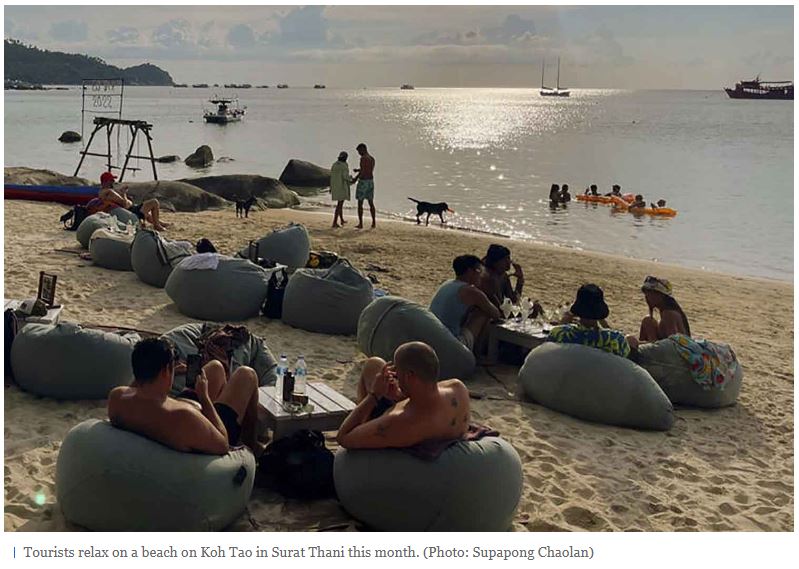Test & Go a fillip for Thai tourism
Following an improvement in Thai tourism during the festive season in December, the industry faced a rocky start to the New Year due to the rise of Omicron, the highly transmissible Covid-19 variant.
The fresh wave of infections prompted the government to put stringent measures in place by suspending the Test & Go scheme, hindering the return of tourists during the peak travel season.
Test & Go has to generate more tourism arrivals once the viral situation improves, said Kongsak Khoopongsakorn, president of the Thai Hotels Association’s southern chapter.
Even though news and research suggest that Omicron is not as lethal as first feared, the reopening has to be conducted carefully over the long run to prevent the emergence of new variants.
RESTORING CONFIDENCE
Mr Kongsak said that even though the resumption of Test & Go can ease the travel experience for tourists, the priority was to revive confidence and keep cases low at around 1,000-2,000 per day.
The number of arrivals in Phuket is expected to remain at 9,000 arrivals per day, of which 2,000-3,000 will be foreigners, mostly from markets like Russia, Germany, the US and Israel, throughout March.
Fewer tourists are anticipated in April as it marks the beginning of low season.
Mr Kongsak said 1,000 hotels had already reopened, from 2,500 hotels in total, but only 50-60% of workers are employed due to the lack of tourists.
He said there was still intense competition and heavy room rate discounts of more than 60% to lure guests.
“Phuket will see moderate growth as Omicron dominated the peak season and disrupted the ongoing recovery,” Mr Kongsak said.
Ratchaporn Poolsawadee, president of the Tourism Association of Koh Samui, said operators have to analyse feedback from travel agents after the resumption of Test & Go, as the abrupt suspension in December had affected tourists’ confidence.
The average occupancy rate in January stood at 50% thanks to tourists who received approval before the programme was suspended, and some sandbox arrivals.
However, bookings for February remain low at 10-20%.
Mr Ratchaporn said the occupancy rate might improve to over 70% during high season in Samui, which will last until May, if the government reduces the number of RT-PCR tests required.
Hotels and the Tourism Authority of Thailand have to accelerate their marketing campaigns and inform tourists about the resumption of Test & Go to capture the remaining demand before the high season ends, said Pongsakorn Ketprapakorn, president of the Tourism Council of Phangnga.
Tourism operators in Phangnga expect to see more growth with at least 40% occupancy, as seen last month, from Test & Go travellers who can register again from February.
DOMESTIC SUPPORT
As the country has to wait for a new flow of tourists following the recent relaxation in the requirements, domestic visitors are considered to be the key market to support the travel industry, said Mr Pongsakorn.
Operators aim to introduce a Khao Lak surf passport for tourists to enjoy surfing at famous surf spots and stay at local hotels that offer special promotions.
The campaign will be launched along with the latest phase of We Travel Together, a hotel subsidy, in February.
Mr Kongsak said We Travel Together is crucial to boosting domestic trips while waiting for the next high season. He hopes the scheme will continue until September to allow operators to maintain steady revenue.
Koh Samui also plans to attract domestic travellers during the next two months with tourism campaigns, trade fairs, and by creating greater recognition in the local market with tourism mascots.
Mr Ratchaporn said domestic tourists help support hotel occupancy as there are many uncertainties ahead, such as future disruptions to Test & Go.
Moreover, international market demand still has to be evaluated on a monthly basis as the travel rules in each country are prone to being amended.
Source: https://www.bangkokpost.com/business/2253639/test-go-a-fillip-for-thai-tourism


 Thailand
Thailand




